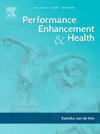提高比赛成绩的药物是否“安全”?
IF 3.7
Q2 HOSPITALITY, LEISURE, SPORT & TOURISM
引用次数: 0
摘要
兴奋剂运动会提出了一种竞技体育的模式,在这种模式中,兴奋剂的使用不仅被允许,而且还得到主办方的积极支持。虽然他们似乎认识到对最终用户的潜在危害的证据,但他们认为,提高成绩药物的使用是可以安全管理的。他们主张采用医学监督模式,通过仔细监测生物标志物(如血球计数)和生理评估(如基因检测、心电图),将危害降至最低。然而,我们认为,在这种情况下,现有的证据基础不足以正确地为可行的减少伤害模型提供信息。具体而言,现有证据主要来自观察性研究,因此缺乏关于特定物质、超生理剂量和随后的不良健康影响之间关系的关键细节。此外,一些证据显示对流行病学知之甚少的潜在长期影响。我们通过对健康不利影响的三个范例领域——心血管、生殖和认知功能——来检查证据中的差距,以证明在医学监督下使用兴奋剂的情况下减少危害模型的显著局限性。本文章由计算机程序翻译,如有差异,请以英文原文为准。
Harm reduction in the Enhanced Games: Can performance enhancing drugs be ‘safe’?
The Enhanced Games proposes a model of competitive sport in which the use of performance enhancing drugs is not only permitted but actively supported by the organisers. Whilst they seemingly recognise the evidence around potential harms to the end-user, they contend that the use of performance enhancing drugs can be safely managed. They argue in favour of a medically supervised model in which harms are minimised by careful monitoring of biomarkers (e.g., blood counts) and physiological assessments (e.g. gene testing, electrocardiograms). However, we argue that the extant evidence base is insufficient to properly inform a workable harm reduction model in this context. Specifically, the available evidence is largely drawn from observational studies and as such lacks crucial detail around relationships between specific substances, supraphysiological doses and subsequent adverse health effects. Furthermore, some evidence shows potentially long-term effects for which the epidemiology is poorly understood. We examine gaps in the evidence via three exemplar areas of adverse health effects – cardiovascular, reproductive, and cognitive function – in order to demonstrate the significant limitations of a harm reduction model in the context of medically supervised doping.
求助全文
通过发布文献求助,成功后即可免费获取论文全文。
去求助
来源期刊

Performance enhancement and health
Social Sciences-Health (social science)
CiteScore
4.70
自引率
0.00%
发文量
27
审稿时长
57 days
 求助内容:
求助内容: 应助结果提醒方式:
应助结果提醒方式:


